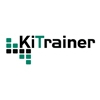 TCmanager® enables seamless integration of eLearning modules into seminar management. SCORM-compliant content, blended learning concepts, and virtual classrooms can be flexibly combined. Learning portals offer personalized access, self-service booking, and individual learning paths. Together with the LXP extension, modern digital learning scenarios emerge that foster self-directed learning, motivation, and sustainable competence development.
TCmanager® enables seamless integration of eLearning modules into seminar management. SCORM-compliant content, blended learning concepts, and virtual classrooms can be flexibly combined. Learning portals offer personalized access, self-service booking, and individual learning paths. Together with the LXP extension, modern digital learning scenarios emerge that foster self-directed learning, motivation, and sustainable competence development. With Cornerstone Learning Software, organizations can reliably meet compliance requirements, improve employee performance, motivate the entire workforce, and support business goals. eLearning Management: Deliver classroom training, virtual courses, exams, certifications, and compliance content for employee training and development from one centralized solution. With Cornerstone Mobile, employees can access learning content (CBT, WBT) and use the courses online or offline on their smartphones and tablet devices.
With Cornerstone Learning Software, organizations can reliably meet compliance requirements, improve employee performance, motivate the entire workforce, and support business goals. eLearning Management: Deliver classroom training, virtual courses, exams, certifications, and compliance content for employee training and development from one centralized solution. With Cornerstone Mobile, employees can access learning content (CBT, WBT) and use the courses online or offline on their smartphones and tablet devices. Improve product knowledge through training and increase revenue quickly and measurably with Cornerstone Learning for Extended Enterprise. Enable end users to easily discover a variety of courses, content, and training programs (CBT, WBT) to educate themselves on your business, the products you offer, or the services you provide. Develop an effective training profit generation program to identify revenue streams for your business.
Improve product knowledge through training and increase revenue quickly and measurably with Cornerstone Learning for Extended Enterprise. Enable end users to easily discover a variety of courses, content, and training programs (CBT, WBT) to educate themselves on your business, the products you offer, or the services you provide. Develop an effective training profit generation program to identify revenue streams for your business. With sam*, you can organize company training, instruction and knowledge transfer in the area of safety extremely efficiently. With the software, you fulfill all regulations in accordance with §12 of the Occupational Health and Safety Act, BGV A1, BGR A1 or in the area of classic personnel development. Use sam® for electronic and personal group training (blended learning).
With sam*, you can organize company training, instruction and knowledge transfer in the area of safety extremely efficiently. With the software, you fulfill all regulations in accordance with §12 of the Occupational Health and Safety Act, BGV A1, BGR A1 or in the area of classic personnel development. Use sam® for electronic and personal group training (blended learning). Digital learning integrates directly into the LMS via SCORM courses, virtual classrooms, and blended learning. Learners can access content anytime, anywhere. The system supports scalable, future-proof training for employees, customers, and external partners, combining self-directed learning, performance tracking, and competency development in one platform.
Digital learning integrates directly into the LMS via SCORM courses, virtual classrooms, and blended learning. Learners can access content anytime, anywhere. The system supports scalable, future-proof training for employees, customers, and external partners, combining self-directed learning, performance tracking, and competency development in one platform. KiTrainer, the complete solution for electronic instruction and learning management, perfectly supports companies and organizations in electronic instruction. The software is a management system that organizes, conducts, monitors and documents all instruction in a legally compliant manner. It is suitable for online training and instruction for own employees and external persons and can be linked to an access management system.
KiTrainer, the complete solution for electronic instruction and learning management, perfectly supports companies and organizations in electronic instruction. The software is a management system that organizes, conducts, monitors and documents all instruction in a legally compliant manner. It is suitable for online training and instruction for own employees and external persons and can be linked to an access management system. teachNOW! is a parameterizable eLearning course software and learning platform (CBT, WBT) that offers you extraordinary flexibility combined with high performance. With teachNOW! you can operate your own eLearning platform. The integrated template system offers you unlimited design possibilities. Use the extensive eLearning tools to run your courses as efficiently and time-saving as possible in the World Wide Web.
teachNOW! is a parameterizable eLearning course software and learning platform (CBT, WBT) that offers you extraordinary flexibility combined with high performance. With teachNOW! you can operate your own eLearning platform. The integrated template system offers you unlimited design possibilities. Use the extensive eLearning tools to run your courses as efficiently and time-saving as possible in the World Wide Web. The standard LMS sycat eLU is quickly implemented and easy to use. Learning is also a motivating experience for everyone thanks to an intuitively operable interface. With sycat eLU you can organize instructions, further education and training programs for your employees or briefings for suppliers, visitors and external employees in no time. With the integrated authoring tool you can easily create your own learning content. This way you can turn your PowerPoint into a whole course in minutes.
The standard LMS sycat eLU is quickly implemented and easy to use. Learning is also a motivating experience for everyone thanks to an intuitively operable interface. With sycat eLU you can organize instructions, further education and training programs for your employees or briefings for suppliers, visitors and external employees in no time. With the integrated authoring tool you can easily create your own learning content. This way you can turn your PowerPoint into a whole course in minutes.